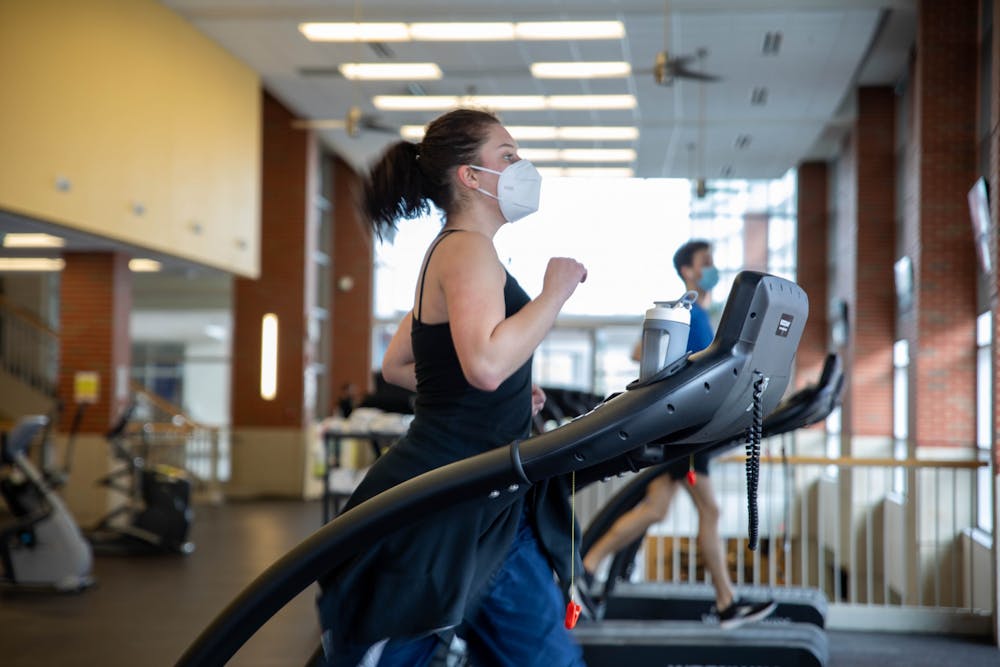What are the best practices for exercising during the COVID-19 pandemic?
- If you’re exercising at a gym, visit during low-usage times so there aren’t as many people.
- Arrive in your workout clothes and shower at home to avoid using shared locker rooms and bathrooms.
- Maintain social distancing of at least 6 feet (about 2 arm lengths) from other people, even if you’re exercising outdoors.
- To prevent overexerting yourself, limit indoor high-intensity activities, such as vigorous dancing, pick-up basketball, running, racquetball/squash and spinning. Lower-intensity activities, such as yoga or walking, are safer indoor options.
- Keep workouts as brief as possible to avoid prolonged exposure to others.
- If your mask gets sweaty, replace it with a dry, clean mask while exercising because a damp mask can impact its effectiveness.
By February, 80 percent of people don’t continue with their New Year’s resolutions, according to U.S. News and World Report. According to a YouGov survey, 50 percent of people want to improve their fitness for their 2021 New Year’s resolution, and some may feel even more pressure to keep up with this resolution in light of the COVID-19 pandemic.
If you are concerned about visiting the gym and whether wearing a mask while you’re exercising will affect your performance, consider the information below so you can decide how best to go about exercising during the pandemic to keep your New Year’s resolution into the spring.
How does exercise affect your body’s oxygen levels?
As you exercise, your heart pumps more oxygen-rich blood to the muscles that are moving, according to Breathe, a clinical educational publication from the European Respiratory Society. Your muscles are working harder, so your body uses more oxygen and produces more carbon dioxide.
To cope with this extra demand, your breathing has to increase from about 15 breaths per minute (12 liters of air) when you are resting up to about 40 to 60 breaths per minute (100 liters of air) during exercise. Your blood circulation also speeds up to take the oxygen to the muscles so they can keep moving.
Does wearing a mask while exercising affect how your heart and lungs receive oxygen?
For healthy people, wearing masks while exercising has not been shown to be harmful, according to the Centers for Disease Control and Prevention. However, if you have asthma, COPD or heart disease, you should consult your doctor before attempting exercise with any mask.
The rate of perceived exertion, one’s heart rate and tissue oxygenations are not affected by wearing a mask, according to a study published in the International Journal of Environmental Research. The study’s participants wore three-layer cloth masks while cycling and then repeated the activity with no mask. The results showed no difference in the participants’ rate of perceived exertion, heart rate or tissue oxygenation.
How does asthma, COPD and heart disease affect your lung and heart’s function while exercising?
With asthma, the airways in your lungs are often swollen or inflamed, according to the American Lung Association. Dust, chemicals and smoke in the environment can make your airways swell even more. This narrows the space for the air to move in and out of the lungs. The muscles that wrap around your airways can also tighten, making breathing even harder.
With COPD, the airways in your lungs become inflamed, and the tissue where oxygen is exchanged is destroyed, according to the American Lung Association. The flow of air in and out of your lungs then decreases. When that happens, less oxygen gets into your body tissues, and it becomes harder to get rid of the waste gas carbon dioxide.
With heart disease, plaque builds up in the walls of the arteries, according to the American Heart Association. This buildup narrows the arteries, making it harder for blood to flow through. If a blood clot forms, it can block the blood flow, which can can cause a heart attack or stroke.





